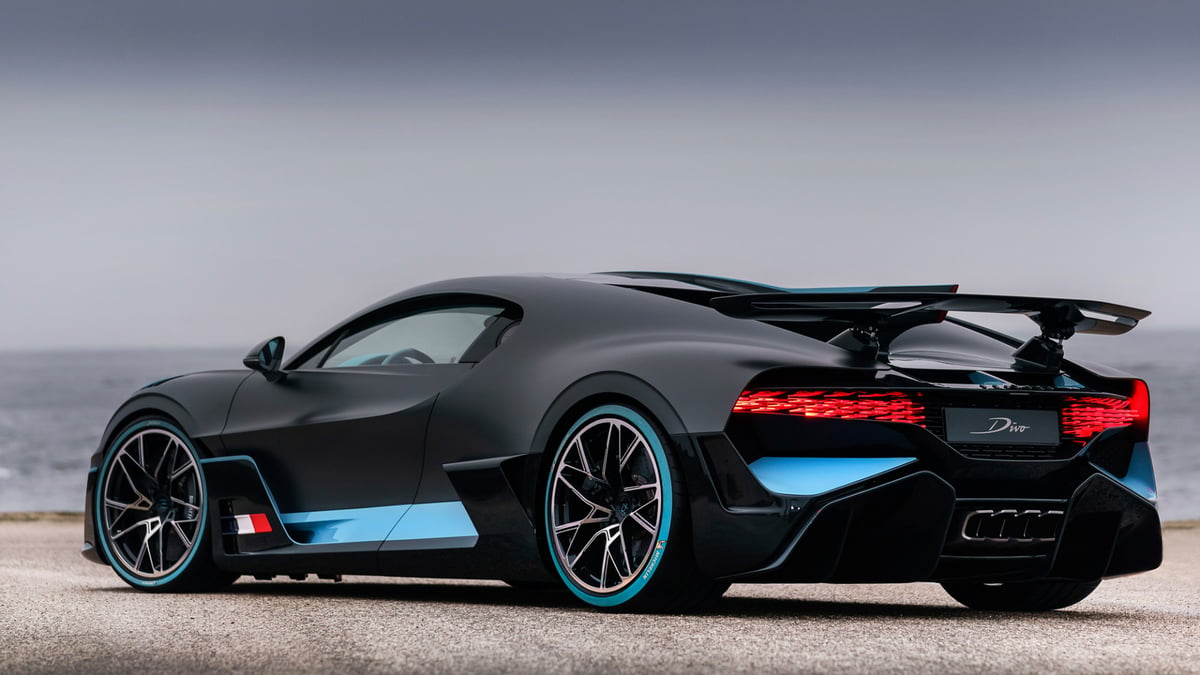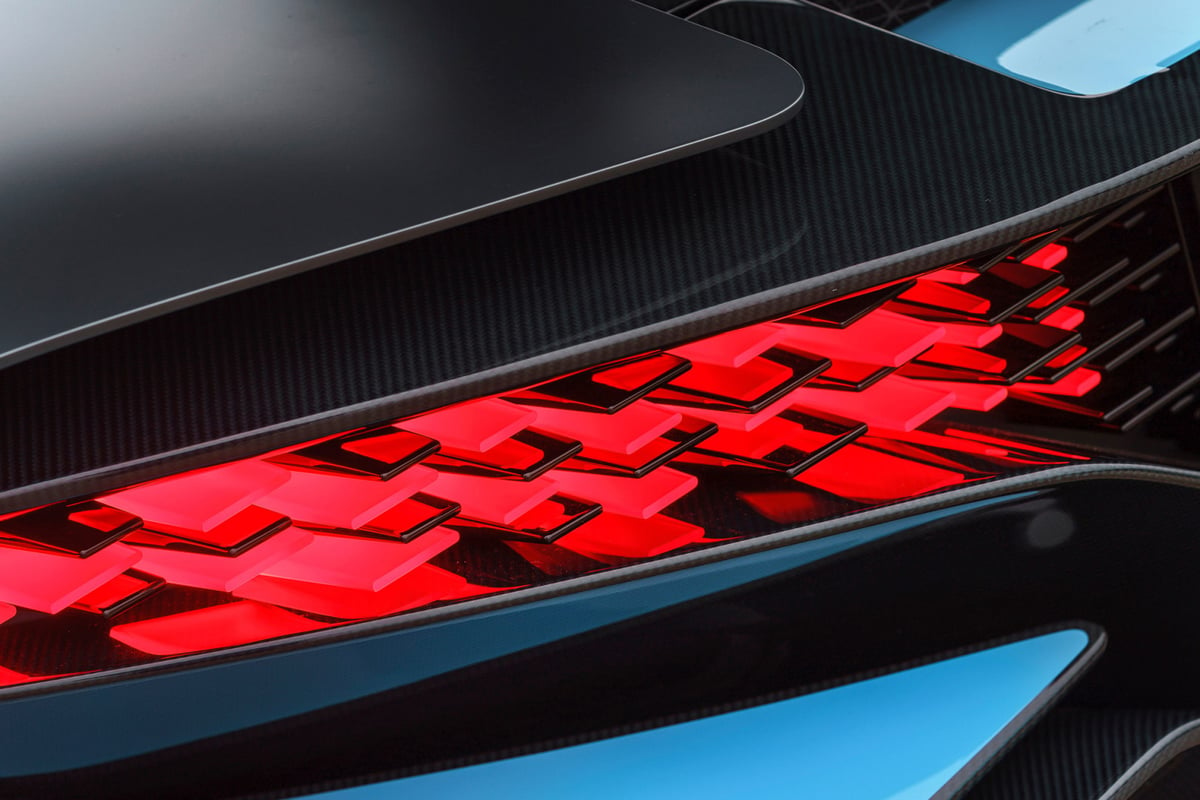French luxury car maker Bugatti revealed its latest wallet-busting supercar at an exclusive event in Monterey, California, last Friday. Costing an eye-watering $5.72-million dollars, the Divo sold out its limited production run of 40 in just hours.
It might not be as fast in a straight line as the Chiron, the company’s previous production release, but Bugatti’s new Divo makes its mark on the track. Boasting superior cornering thanks to significant weight savings and an increase in downforce, the company claims the Divo is its most agile car yet.
The aesthetic of the car is, of course, entirely subjective. In our humble opinion, the Divo looks stunning from every angle. Not least the rear, where a centerpiece can be found in a partially 3D printed rear grille.
“The Divo is a further example of our design philosophy ‘Form follows Performance‘. In this case, the engineers and designers aimed to create a vehicle focusing on cornering speeds and lateral dynamics,” explains Achim Anscheidt, Director of Design at Bugatti.
“Our task was to develop a vehicle which would look different from the Chiron but still be immediately recognizable as a Bugatti“, Anscheidt adds.

Buggati Prints it Again
Comprising a cascade of fins, of which 44 light up when the brake lights come on, this array of 3D printed elements mark another step on an increasingly trodden path to additive manufacturing’s (AM) use in the automotive sector.
In fact, given the smaller volumes involved it seems a natural fit for highly exclusive small production run cars emphasizing design alongside performance to use AM. The traditional issue of scaling AM up to meet large volumes of parts is cut if you only need them for 40 cars. And that’s 40 cars that are purchased long before they even hit the road, too.

This is not Bugatti’s first high profile use of 3D printing in a landmark vehicle. As we reported back in January, the company broke new ground with its 3D printing of a Titanium brake caliper.
Developed for use on the Chiron supercar, the piece claimed a bevy of firsts: both as the largest and first 3D printed brake caliper, in addition to being the first use of Titanium in automotive production.
While the caliper itself serves as a trial investigating the part’s use for series production, perhaps the real value comes in the learnings it generates. With Bugatti serving as the Volkswagen Group’s R&D lab, it’s just a matter of time before we see the results trickle down to our everyday drives.
Source: Bugatti
License: The text of "New Bugatti Divo Supercar Features an Elegant 3D Printed Rear Grille" by All3DP is licensed under a Creative Commons Attribution 4.0 International License.